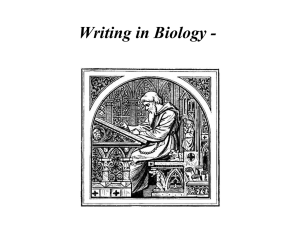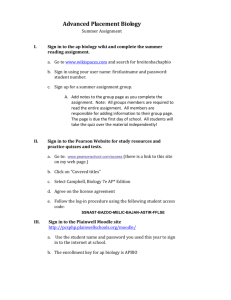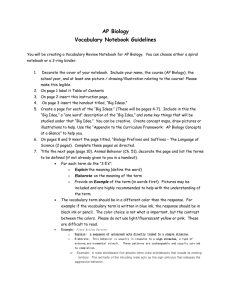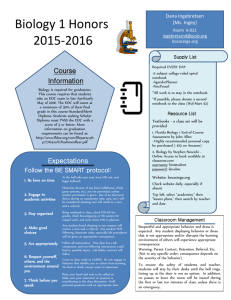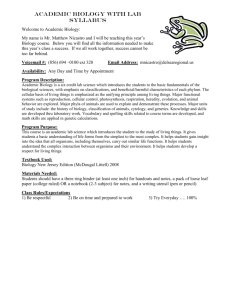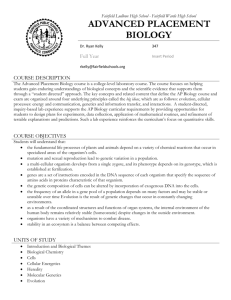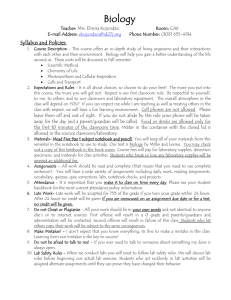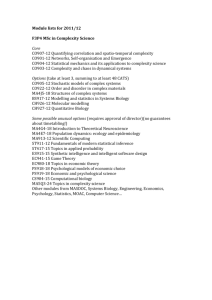the methods section
advertisement
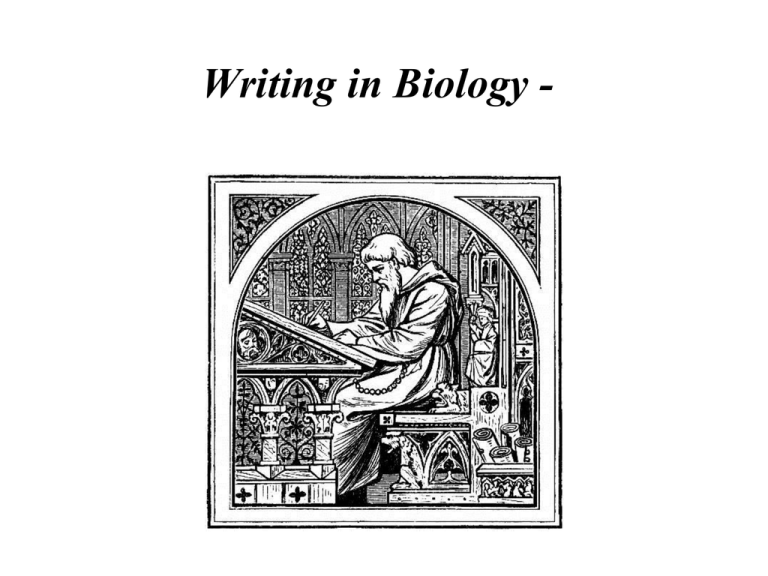
Writing in Biology - Writing scientific papers • Understanding how to do science is a powerful insight • Communicating science is critical to success and progress in science • Good writing comes from clear thinking • Precision in writing (language) is critical to communication Good writing starts with a well organized lab/data notebook Keeping the laboratory notebook: • goals and objectives – clear statements grounded in clear rationale (record questions and uncertainties) • a well thought through experimental approach that is clearly laid out serves as the basis for planning the experiment – flow charts, time-line, equipment, leads to paragraphs of text • the procedure should be laid out in check list format to ensure that laboratory work will be done quickly and accurately • a record of data – if in doubt write it down • the lab notebook becomes the starting place for scientific writing Keys to successful writing in biology – from WAB ‘There is no easy to learn to write in biology or in any other field. It helps to read a lot of good writing and not just in biology. … But mostly you just have to work hard at writing – and keep working hard at it, draft after draft, assignment after assignment. That will be much easier to do if you have something in mind that you actually want to say.’ More keys to successful writing in biology – from WAB ‘All good writing involves 2 struggles: the struggle for understanding and the struggle to communicate that understanding to readers. Like the making of omelets or crepes, the skill improves with practice. There are no shortcuts and there is no simple formula that can be learned and then applied mindlessly to all future assignments.’ Rules for writing from George Orwell Politics and the English Language: “I think the following rules will cover most cases: (i) Never use a metaphor, simile or other figure of speech which you are used to seeing in print. (ii) Never use a long word where a short one will do. (iii) If it is possible to cut a word out, always cut it out. (iv) Never use the passive voice where you can use the active. (v) Never use a foreign phrase, a scientific word or a jargon word if you can think of an everyday English equivalent. (vi) Break any of these rules sooner than say anything barbarous.” Basic structure of a scientific paper In order: 1. Abstract 2. Introduction 3. Methods (Materials and Methods) 4. Results 5. Discussion 6. Literature cited 7. Tables 8. Figures Materials and Methods When writing the paper, don’t begin at the beginning, start with the materials and methods • It is the least complicated section, though it is quite detailed. • Careful reconstruction of what was done brings freshly to mind the whole of the study. • It is often tightly linked to the Results section, and it may be beneficial to begin a rough draft or at least an outline of that section as M&M is written. Repeatability is: • a fundamental feature of science • what makes science so powerful • would not be possible with a weak Methods section The Methods section contains subsections: • Materials - describe the plant or animals used in the study (you may subtitle it as Plant Material or Animal Materials, etc.) • Use Latin names for species, designating strains where appropriate • Make it clear how they were maintained and prepared • May also provide a list of unusual or necessary equipment • Methods - for each experimental manipulation used in the study, make a separate subtitled section (eg. Pulse Rate Measurement or Determination of Photosynthetic Rate, etc.) • Assists a reader in locating a method while reading Results • Details are introduced in context • When a protocol from another paper is followed exactly, cite that paper and then note any deviations, if appropriate • The source - manufacturer of any supplies or instrumentation should be noted Example Methods Section from Allison 2002 What not to include: • Unnecessary detail about how to run instrumentation • The room number where the experiment was done • How to prepare a solution (unless it is highly unusual) • Words that can be abbreviated (see p. 11 & 268 WAB) (but never begin a sentence with an abbreviation) • How statistics or measurements were performed (unless highly unusual) – but useful to mention name of computer program • Any unnecessary detail (such as how samples were numbered)
